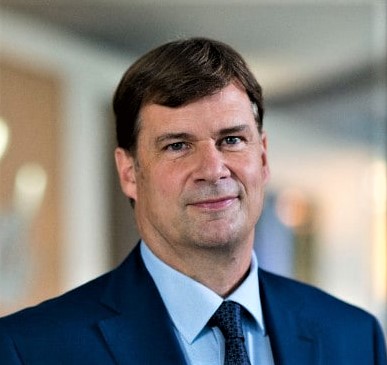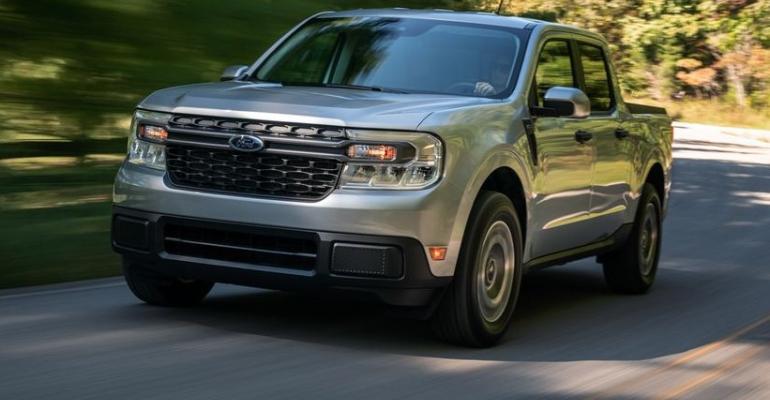Even though it expects only a modest improvement in production in the fourth quarter and through the first half of next year, Ford plans to reinstate dividends to shareholders, the company says.
Reinstating regular quarterly dividends in the fourth quarter reflects the confidence in the company’s direction and the Ford+ plan implemented when Jim Farley took over as CEO. “We’re continuing to make dramatic strides,” Farley says during a discussion of third-quarter financial results with analysts.
Ford+ is designed to improve profitability and expand aggressively into high-tech areas including electric and connected vehicles. “We’re fully invested in the future,” Farley (pictured, below left) says.
“We had to turn around our automotive operations, and our results in the third quarter show we’re making significant progress.”
Ford reports third-quarter revenue of $35.7 billion, net income of $1.8 billion and adjusted earnings before taxes and interest of $3 billion. The automaker’s North American EBIT margin was 10.1%.
The automaker, Farley says, is “spring-loaded” for growth in North America as semiconductor supplies increase, with a 50% increase in orders – to more than 100,000 – for vehicles already on the market, excluding those for the all-new Bronco.
In addition, Ford’s new electric vehicles – the Mustang Mach-E CUV, the F-150 Lightning pickup for which it has more than 160,000 orders and the Ford Transit light-commercial vehicle, which is already sold out – are major hits, Farley says.
“We have to break constraints now so we can deliver hundreds of thousands of battery-electrics next year,” he says, noting the company’s product creation process has become faster. “We did Maverick in 20 months,” he says of the compact pickup powered by a standard hybrid powertrain.
The company’s industrial system is leaner even though Ford remains an incredibly complex company, Farley says.
 Improvement in semiconductor supplies in North America in the third quarter helped lift regional product shipments 67% from the second quarter. Nonetheless, production levels will remain relatively low for the remainder of the year and through the first half of 2022 and possibly into 2023, according to John Lawler, Ford’s chief financial officer, who described the continuing shortage of semiconductors as one of the “headwinds” the company is facing over the next several months. Ford also continues to face “crosswinds” such as higher costs for aluminum, steel and freight.
Improvement in semiconductor supplies in North America in the third quarter helped lift regional product shipments 67% from the second quarter. Nonetheless, production levels will remain relatively low for the remainder of the year and through the first half of 2022 and possibly into 2023, according to John Lawler, Ford’s chief financial officer, who described the continuing shortage of semiconductors as one of the “headwinds” the company is facing over the next several months. Ford also continues to face “crosswinds” such as higher costs for aluminum, steel and freight.
Ford dealers now have a 20-day supply of vehicles on their lots. In the past, dealers held a 70-day supply before the pandemic upended the industry, Lawler says. When the inventory is finally replenished, the daily supply will be about 50 days. “We’re not going back to the old model of pushing vehicles on to dealers,” he says.
Farley says Ford will have to create incentives so ordering vehicles remains attractive to buyers. But over time, it also reduces the need for expensive advertising aimed at attracting new customers.
Ford’s spending on warranties, a major expense in recent years, has been reduced by more than $1 billion this year, Lawler says.





